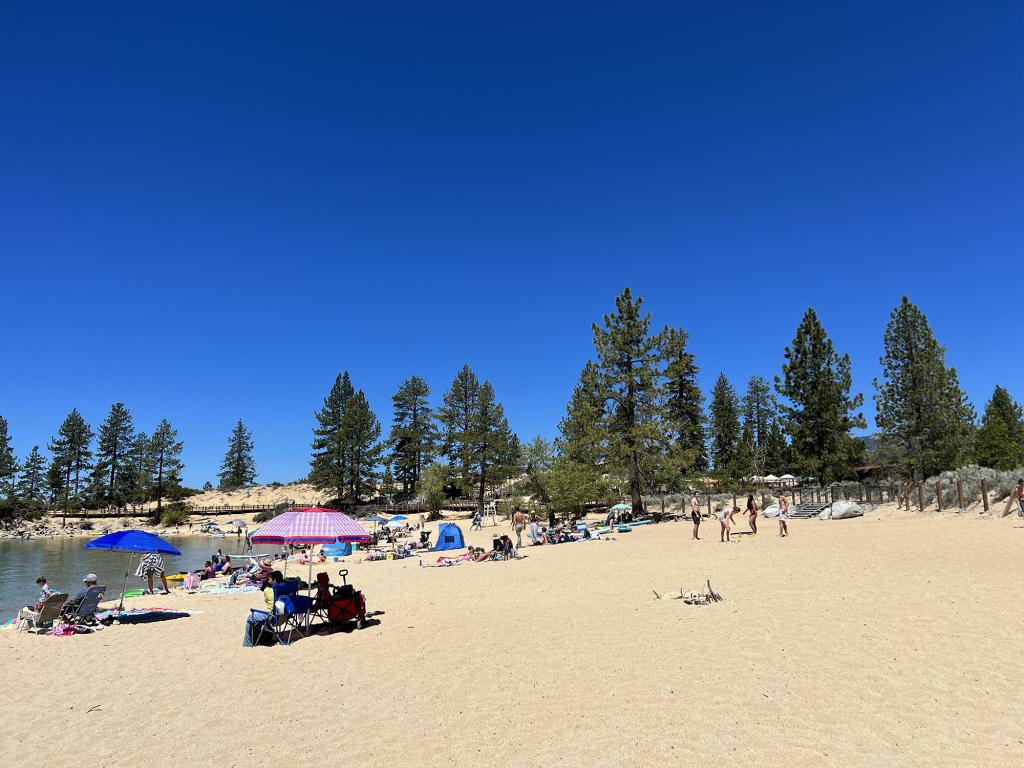Sand Harbor State Park, located on the Nevada side of Lake Tahoe, is implementing a reservation system for visitors during peak times in order to reduce traffic congestion and overcrowding. This new system is part of an effort to manage the post-Covid travel surge and maintain the park’s scenic beauty. The park, known for its stunning swimming holes, is following in the footsteps of other popular tourist destinations around the world that have implemented entry fees and taxes to deter mass tourism.
Venice, Italy recently implemented an entry fee to limit overcrowding, while the Indonesian island of Bali has introduced a tourist tax. Even national parks in the United States are requiring visitors to make reservations for specified time slots, with some parks charging a reservation fee. Sand Harbor State Park’s reservation system will be introduced gradually, starting on weekends and holidays from August 17th to October 13th. The park plans to expand this system in the future to further regulate the number of visitors and provide a more enjoyable experience for all.
The pushback against mass tourism is a growing trend as destinations around the world grapple with the influx of visitors and the strain it puts on local resources and infrastructure. Hawaii, for example, is considering a $25 tax on tourists to help offset the impact they have on natural resources. These measures are aimed at striking a balance between welcoming tourists and protecting the environment and local communities that rely on tourism for their livelihood. By implementing reservation systems and entry fees, these destinations hope to ensure a sustainable future for their tourism industry.
Sand Harbor State Park’s decision to require reservations during peak times reflects a larger shift in the travel industry towards more sustainable practices. As travelers increasingly seek out unique and less crowded destinations, popular tourist spots are looking for ways to limit overcrowding and maintain the integrity of their natural resources. By introducing reservation systems and entry fees, these destinations can control the number of visitors and ensure a high-quality experience for those who do choose to visit.
The reservation system at Sand Harbor State Park is part of a broader effort to balance conservation and tourism, ensuring that visitors can continue to enjoy the natural beauty of the area without causing harm to the environment. By managing visitor numbers and traffic flow, the park can protect its delicate ecosystem and provide a more enjoyable experience for all. As other destinations around the world take similar steps to regulate tourism, the travel industry is evolving towards a more sustainable and responsible model that prioritizes the long-term health of the planet and local communities.
In conclusion, Sand Harbor State Park’s reservation system is a proactive step towards managing the impact of tourism on local resources and infrastructure. By requiring visitors to make reservations during peak times, the park can control traffic congestion and overcrowding while still allowing people to enjoy its stunning swimming holes. This approach reflects a broader trend in the travel industry towards sustainable practices and responsible tourism. As destinations around the world grapple with the challenges of mass tourism, these measures offer a path towards creating a more sustainable future for travel that benefits both visitors and local communities.


